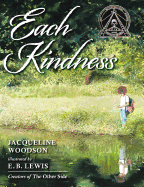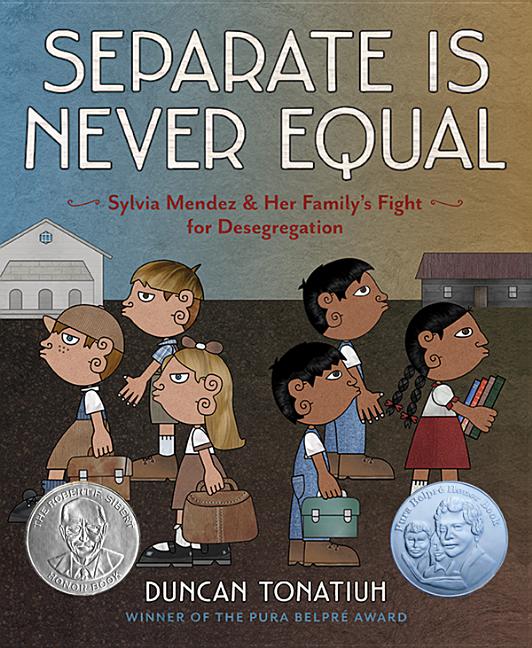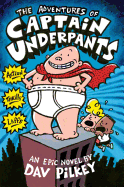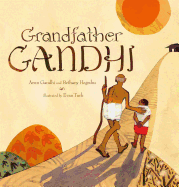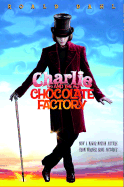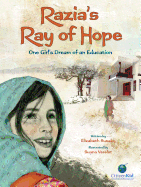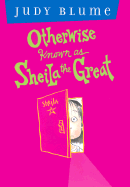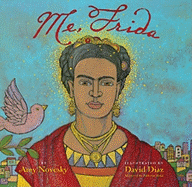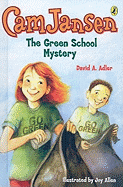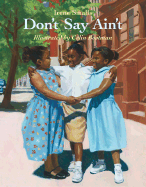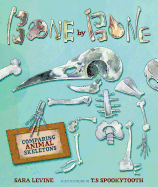Collection Analysis Report
for M-DCPS Summer Reading List - Grade 3
This report provides data analyses into the titles on this list to help support your efforts to put the right book in each reader's hands.
This report is organized by Collection Analysis by Genre, Cultural, and Curricular Areas, Quantitative Measures, and Qualitative Measures.
Explore all of TeachingBooks
Sign in and enjoy.
Collection Analysis by Genre, Cultural, and Curricular Areas
For the 18 books on this list, please find an analysis revealing the quantity of titles associated with genre, cultural, and curriculum classifications. Additionally, please find the "Not Represented" section where you can click to identify other titles to potentially add to this list.
We hope this collection analysis tool helps you achieve the variety and differentiation of books that you want for your reading opportunities.
(18 of 18 titles have genres, curricular, or cultural experiences.)
- English Language Arts (12 books)
- Picture Book (8 books)
- Nonfiction (7 books)
- Social Studies (7 books)
- Realistic Fiction (6 books)
- Biography (5 books)
- History (5 books)
- Humor (5 books)
- Science (3 books)
- Art (2 books)
- Health (2 books)
- Science Fiction / Fantasy (2 books)
- Spanish (2 books)
- Adventure (1 books)
- Historical Fiction (1 books)
- Math (1 books)
- Mystery (1 books)
- STEAM (1 books)
Genre, Curricular, and Cultural Experience categories are assigned by TeachingBooks based on professional reviews, authoritative sources, and company guidelines.
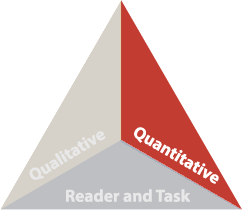 Quantitative Measures
Quantitative Measures
For 17 of 18 titles that have known Lexile levels, below is the low, high, and average Lexile® for the books in this list. We hope these data points, along with the crosswalk to other measures, provide insights into the variety and differentiation of this collection.
Lexile® Average: 658 (Range: 530 - 900)
Reading Level and Grade Band Crosswalk
| Grade Band | Lexile® | ATOS | Degrees of Reading Power® | Flesch-Kincaid | Fountas & Pinnell | Reading Maturity | SourceRater |
|---|---|---|---|---|---|---|---|
| 2-3 | 420-820 | 2.75-5.14 | 42-54 | 1.98-5.34 | I-P | 3.53-613 | 0.05-2.48 |
| 4-5 | 740-1010 | 4.97-7.03 | 52-60 | 4.51-7.72 | O-V | 5.42-7.92 | 0.84-5.75 |
Key: Purple highlight represents average.
Source: National Governors Association for Best Practices and Council of Chief State School Officers.[1]
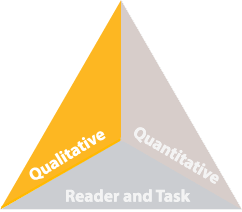 Qualitative Measures (BETA)
Qualitative Measures (BETA)
For 9 of 18 titles that have known qualitative measurements, this graph reveals the aggregated low, high, and average qualitative measures for the books in this list. We hope this range of information shows the variety and differentiation of this collection.
Qualitative Text Complexity Ranges
= low and high range of submitted values = average of submitted values
- Slightly
- Moderately
- Very
- Exceedingly
Qualitative measures for each title are determined by crowd sourced results from professional educators who complete the literary or informational text complexity rubrics. These are relatively new on TeachingBooks so only a small percentage of all the titles have currently been evaluated. Perhaps you can help?
Instructional Materials Summary
Below please find a summary of available multimedia texts and instructional materials that enrich and deepen the discussion of the titles on this list.
- 39 Videos
- 18 Book Readings
- 69 Lesson Plans
- Total of 354 resources
Details for Each Book
Below are the titles on "M-DCPS Summer Reading List - Grade 3". If you wish to see the curricular areas, genres, Lexile® and Qualitative measures, along with the collection of ready-to-use instructional materials, go online to TeachingBooks at: https://school.teachingbooks.net/QLMXNF8
Each Kindness
by Jacqueline Woodson and E.B. Lewis
- Grades Used: pk, k, 1, 2, 3, 4, 5, 6
- Genres: Realistic Fiction, Picture Book
- Cultural Experiences: African (Global), African American
- Curricular Areas: English Language Arts, Social Studies
- Lexile: 530
- Year Published: 2012
Qualitative Measures:
- Meaning: Moderately Complex
- Text Organization: Slightly Complex
- Use of Visual Features: Slightly Complex
- Conventionality: Moderately Complex
- Vocabulary: Slightly Complex
- Sentence Structure: Moderately Complex
- Life Experiences: Slightly Complex
- Cultural Knowledge: Moderately Complex
Separate Is Never Equal: Sylvia Mendez and Her Family's Fight for Desegregation
- Grades Used: k, 1, 2, 3, 4, 5, 6, 7, 8
- Genres: Biography, Nonfiction, Picture Book
- Cultural Experiences: Latino/a/e/x (Global), Latino (US / Canada)
- Curricular Areas: History, Spanish, Social Studies
- Lexile: 870
- Year Published: 2014
Qualitative Measures:
- Meaning: Moderately Complex
- Text Organization: Moderately Complex
- Use of Visual Features: Moderately Complex
- Conventionality: Moderately Complex
- Vocabulary: Very Complex
- Sentence Structure: Moderately Complex
- Subject Matter Knowledge: Very Complex
- Intertextuality: Very Complex
Judy Moody Saves the World!
by Megan McDonald and Peter H. Reynolds and
Book 3 of the Judy Moody Series
- Genres: Humor, Realistic Fiction
- Curricular Areas: English Language Arts
- Lexile: 570
- Year Published: 2010
The Adventures of Captain Underpants
by Dav Pilkey
Book 1 of the Captain Underpants Series
- Genres: Adventure, Humor, Science Fiction / Fantasy
- Curricular Areas: English Language Arts
- Lexile: 720
- Year Published: 1997
Grandfather Gandhi
by Arun Gandhi, Bethany Hegedus, and Evan Turk
- Grades Used: 2
- Genres: Biography, Nonfiction, Picture Book
- Cultural Experiences: South Asian, Asian, Asian (Global)
- Curricular Areas: History, Social Studies
- Lexile: 600
- Year Published: 2014
Qualitative Measures:
- Meaning: Slightly Complex
- Text Organization: Moderately Complex
- Use of Visual Features: Slightly Complex
- Conventionality: Slightly Complex
- Vocabulary: Moderately Complex
- Sentence Structure: Slightly Complex
- Subject Matter Knowledge: Very Complex
- Intertextuality: Slightly Complex
Charlie and the Chocolate Factory
by Roald Dahl and Quentin Blake
- Grades Used: 3, 4, 5
- Genres: Science Fiction / Fantasy
- Curricular Areas: English Language Arts
- Lexile: 810
- Year Published: 1964
Qualitative Measures:
- Meaning: Very Complex
- Text Organization: Moderately Complex
- Use of Visual Features: Slightly Complex
- Conventionality: Moderately Complex
- Vocabulary: Moderately Complex
- Sentence Structure: Very Complex
- Life Experiences: Very Complex
- Cultural Knowledge: Moderately Complex
The Noisy Paint Box: The Colors and Sounds of Kandinsky's Abstract Art
by Barb Rosenstock and Mary GrandPre
- Grades Used: 2, 3
- Genres: Biography, Nonfiction, Picture Book
- Curricular Areas: Art, History
- Lexile: 630
- Year Published: 2014
Qualitative Measures:
- Meaning: Slightly Complex
- Text Organization: Slightly Complex
- Use of Visual Features: Slightly Complex
- Conventionality: Slightly Complex
- Vocabulary: Slightly Complex
- Sentence Structure: Slightly Complex
- Subject Matter Knowledge: Slightly Complex
- Intertextuality: Slightly Complex
Razia's Ray of Hope: One Girl's Dream of an Education
by Elizabeth Suneby and Suana Verelst
- Grades Used: 3, 4, 5
- Genres: Nonfiction
- Cultural Experiences: South Asian, Muslim, Asian, Asian (Global)
- Curricular Areas: Social Studies
- Lexile: 680
- Year Published: 2013
Qualitative Measures:
- Meaning: Moderately Complex
- Text Organization: Moderately Complex
- Use of Visual Features: Moderately Complex
- Conventionality: Moderately Complex
- Vocabulary: Moderately Complex
- Sentence Structure: Very Complex
- Subject Matter Knowledge: Moderately Complex
- Intertextuality: Moderately Complex
Otherwise Known as Sheila the Great
by Judy Blume
Book 2 of the Fudge Series
- Genres: Humor, Realistic Fiction
- Curricular Areas: English Language Arts, Health
- Lexile: 590
- Year Published: 1972
Me, Frida
by Amy Novesky and David Diaz
- Genres: Biography, Nonfiction, Picture Book
- Cultural Experiences: Latino/a/e/x (Global), Latino (Latin America)
- Curricular Areas: Art, History, Spanish
- Lexile: 660
- Year Published: 2010
Qualitative Measures:
- Meaning: Moderately Complex
- Text Organization: Moderately Complex
- Use of Visual Features: Very Complex
- Conventionality: Very Complex
- Vocabulary: Very Complex
- Sentence Structure: Moderately Complex
- Subject Matter Knowledge: Moderately Complex
- Intertextuality: Very Complex
Cam Jansen and the Green School Mystery
by David A. Adler and Joy Allen and
Book 28 of the Cam Jansen Series
- Genres: Mystery
- Curricular Areas: English Language Arts
- Lexile: 620
- Year Published: 2009
Mr. Ferris and His Wheel
by Kathryn Gibbs Davis and Gilbert Ford
- Grades Used: 2, 3, 4
- Genres: Biography, Nonfiction, Picture Book
- Curricular Areas: English Language Arts, History, Math, Science
- Lexile: 900
- Year Published: 2014
Qualitative Measures:
- Meaning: Slightly Complex
- Text Organization: Slightly Complex
- Use of Visual Features: Moderately Complex
- Conventionality: Moderately Complex
- Vocabulary: Very Complex
- Sentence Structure: Moderately Complex
- Subject Matter Knowledge: Moderately Complex
- Intertextuality: Moderately Complex
Amber Brown Is Not a Crayon
by Paula Danziger and Tony Ross and
Part of the Amber Brown Series
- Grades Used: 2, 3
- Genres: Humor, Realistic Fiction
- Curricular Areas: English Language Arts, Social Studies
- Lexile: 720
- Year Published: 1994
Qualitative Measures:
- Meaning: Moderately Complex
- Text Organization: Slightly Complex
- Use of Visual Features: Moderately Complex
- Conventionality: Moderately Complex
- Vocabulary: Moderately Complex
- Sentence Structure: Moderately Complex
- Life Experiences: Moderately Complex
- Cultural Knowledge: Moderately Complex
Don't Say Ain't
by Irene Smalls and Colin Bootman
- Genres: Historical Fiction, Picture Book
- Cultural Experiences: African (Global), African American
- Curricular Areas: English Language Arts, Social Studies
- Lexile: Unknown
- Year Published: 2003
101 Ways to Bug Your Parents
by Lee Wardlaw
- Genres: Humor
- Curricular Areas: English Language Arts, Social Studies
- Lexile: 560
- Year Published: 1998
Bone by Bone: Comparing Animal Skeletons
by Sara Levine and T.S. Spookytooth
- Genres: Nonfiction, Picture Book
- Curricular Areas: Science, STEAM
- Lexile: 580
- Year Published: 2014
Qualitative Measures:
View all instructional resources and text complexity results for Bone by BoneNo Dogs Allowed
by Bill Wallace
- Genres: Realistic Fiction
- Curricular Areas: English Language Arts, Health, Science
- Lexile: 610
- Year Published: 2005
Mallory on the Move
by Laurie B. Friedman and Tamara Schmitz and
Book 1 of the Mallory McDonald Series
- Genres: Realistic Fiction
- Curricular Areas: English Language Arts
- Lexile: 550
- Year Published: 2004
Explore all of TeachingBooks
Sign in and enjoy.

